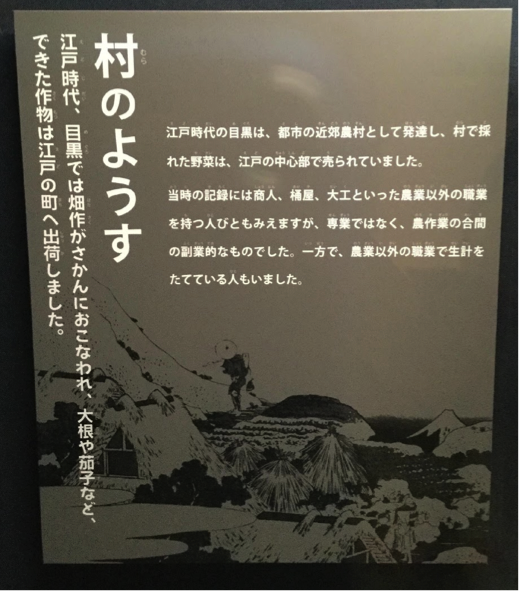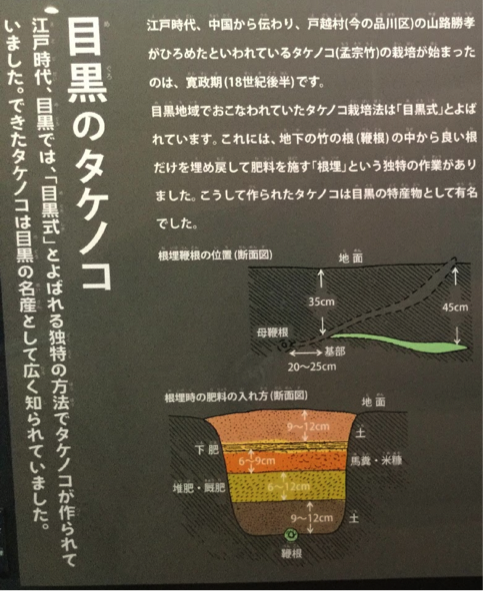Falconry and Meguro

In Meguro, hawks were used to hunt small game. The Edo Shogunate arranged for Meguro’s hawk area to be designated for this purpose calling it Meguro-suji.3
This hunting technique, which used domesticated hawks to hunt wild birds and prey, is the first known case of this type of hunting in Central Asia. Recovered clay figurines of hawkers show this was popular from the 6th century. Falconry was popular with the Emperor, nobility and the samurai class. The methods generated in this hawk area were created and known as the “Falconry System”. The Edo Shogunate’s falconry system was established in Edo in 1590 (Tensho Era Year 18). After the Kan’ei era, in 1717 (Kyoho era Year 2) six other location were created in Kasai, Iwabuchi, Toda, Nakano, Shinagawa and Rokugo. In 1725 (Kyoho era Year 10) the six locations were combined to form Shinagawa and then subsequently consolidated to Meguro control. In 1867, (Keiou Era Year 3) all falconry in the area ceased.

During the Edo period, Meguro consisted of six villages: Mita, Kami-Meguro, Naka-Meguro, Shimo-Meguro, Himonya, and Fusuma (see map).

Kami-meguro Village
Direct Ownership by Tokugawa —> Zojo Shrine Territory from 1632 (Kan’ei Era Year 9) —>Shogunate Control
As Kami-Meguro is not included in the Zojo Shrine Territory List of 1665 (Kanbun Era Year 5), it is believed to have come under Shogunate control prior to that time.
Fusuma Village
From 1591 (Tensho Era Year 19) part of Fusuma Village was under Direct Ownership of the Shogunate, and the rest was under control of the Toko Shrine. The Direct Control area was allocated 274 *koku of rice, and the Toko Shrine portion was allocated 30 koku of rice. In 1635 (Kan’ei Period year 9) the Direct Control area became part of the Zojo Shrine Territory.
*Note for non-Japanese speakers: Control by the Shogunate can often be measured by the amount of rice allocated to a given region as measured in ‘koku’ of rice. One koku is equal to about 150kg, which was enough rice to feed one person for one year.
Direct Control area: Direct Ownership by Tokugawa in 1591 (Tensho Era Year 19) —> Zojo Shrine Territory from 1635 (Kan’ei Era year 9)
Toko Shrine area: Part of the Toko Shrine Territory from 1591 (Tensho Era Year 19)
Mita Village
Direct Ownership by Tokugawa from 1662 (Kanbun Era Year 2) through the Enpo Era (1673-1680).
This area being near Edo, merchant houses were established early and 13 separate townships developed under the machikata (district) system, including Mita-machi, Mitatai-machi, and Mitafurukawa-machi. The townships became part of Edo.
Each village was small, containing only about 10 households. Each district governor handled judicial matters within the district, while all other matters fell under the jurisdiction of the Edo magistrate.
Naka-meguro Village and Shimo-meguro Village
Direct Ownership by Tokugawa —> Zojo Shrine Territory from 1610 (Keicho Era Year 15) —> Part of Nakameguro to Yuuten Shrine (erected in 1718 (Kyoho Era Year 3)
Sections of Naka-Meguro and Shimo-Meguro became part of the Meguro Fudou Temple Monzen-machi. In 1746 (Enkyo Era Year 3) the area changed from temple control to magistrate control, following which the areas were called Naka-Meguro-machi and Shimo-Meguro-machi. The annual tax payments for this area were paid to the Zojo Shrine, and the district governor supervised the people.
The names given to these areas were recorded as smaller village districts (in the same way that sub-references are used to distinguish between village and machi), as if they were indeed districts (machi) of a village (mura). They were called Naka-Meguro Village Naka-Meguro-machi and Shimo-Meguro Village Shimo-Meguro Machi.
Himonya Village
From the time Tokugawa Ieyasu entered the Edo area in 1590 (Tensho Era Year 18) and again from the following year, Kamiya Nuidonsuke Masatsugu, a Hatamoto samurai, controlled 225 koku and 6 toh of rice, while Hokke Shrine controlled 19 koku of rice in Himonya Village annually. In 1632 (Kan’ei Era Year 9), an additional 13 koku of rice was added to the Zojo Shrine’s annual allocation.
Kamiyashi territory From about 1590-91 (Tensho Era years 18 and 19)
Hokke Shrine territory From 1591 (Tensho Era Year 19)
Zojo Shrine territory From 1632 (Kan’ei Era Year 9)
Village Conditions

During the Edo Period in Meguro many fields were cultivated producing Daikon radish and eggplants, which were shipped to the village of Edo.
Meguro as an agricultural suburb of Edo village cultivated vegetables, which were taken to be sold in the central part of Edo. From the records it is noted that shopkeepers, bucket-makers, carpenters and those other non-farming tradesmen were not master craftsmen but were providing ancillary work when not farming. However, there are cases of a few non-farmers making a living at this time.
Meguro’s Bamboo Shoots

In Meguro in the Edo Period a unique method to cultivate “Meguro Style” bamboo shoots was developed for growing bamboo roots. These bamboo shoots became one of Meguro’s famous delicacies.
With the introduction by China during the Edo Period, Katsutaka Yamaji from the Togoshimura area (now Shinagawa Ward) is credited with expanding the cultivation of a special bamboo shoot called the mosodake. This took place during the Kansei era (1789-1801). This “Meguro Style” bamboo shoots were cultivated in the Meguro area. That is, it was a unique method of reusing the nemai, or good roots, which have been taken out of the earth and then replanted with special fertilizer to create a better product. These cultivated shoots known far and wide became a popular specialty of Meguro.